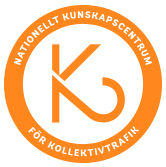Fördelningseffekter av kollektivtrafiken i Stockholms län
Fördelningseffekter av kollektivtrafiken i Stockholms län
We analyse the distribution of transit subsidies across population groups in Stockholm. We develop a novel methodology that takes into account that the subsidy per passenger varies across transit links, since production costs and load factors vary. With this, we calculate the subsidy per trip in the transit network and analyse the distribution of subsidies across population groups. The average subsidy rate in Stockholm is 44%, but the variation across trips turns out to be large: while 34% of the trips are not subsidized at all but generates a profit, 16% of the trips have a subsidy rate higher than 2/3. We calculate the concentration index to explore the distribution of subsidies across income groups. The average subsidy per person is similar for all income groups, except for the top income quintile. This holds not only for the current flat-fare system, but also for distance-based fares and fares with a constant subsidy rate. Transit subsidies is hence not effective as a redistribution policy in Stockholm. The largest systematic variation we find is across residential areas: the average subsidy per person is five times higher in the peripheral areas of the region compared to the regional core, and the subsidy per trip is ten times higher.
